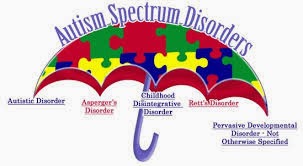
Stricter new criteria for autism may change how frequently the condition is diagnosed, a new study suggests.
The study estimates that if the new diagnostic guidelines had been in place in 2008, they would have lowered the prevalence of the disorder in a nationally representative database to one in 100 children.
The most recent estimate of autism prevalence from this database, according to the U.S. Centers for Disease Control and Prevention, is one in 88 children with the diagnosis.
Researchers say it's hard to tell how quickly the new guidelines will be put into practice. But some fear this change to how the condition is diagnosed may mask true increases in the number of children who develop symptoms that have been consistent with the disorder.
"The trend in the incidence of autism spectrum disorders has been one of pretty steady increases. Whether the switch to DSM-5 would offset that yearly increase remains to be seen," said study author Matthew Maenner, an epidemiologist with the CDC.
But advocates for children with autism say the ramifications of the new guidelines go beyond research. They say they're starting to see signs that children are being reclassified under the new criteria and that some may be losing access to needed services as a result.
In May, the American Psychiatric Association published sweeping new guidelines for the diagnosis of autism spectrum disorders in its Diagnostic and Statistical Manual of Mental Disorders, or DSM-5.
In the past, children who met six of 12 possible criteria could be diagnosed with one of several related conditions including autistic disorder, childhood disintegrative disorder, pervasive developmental disorder not otherwise specified (PDD-NOS) and Asperger disorder, according to study background information.
Now, those categories have been folded into a single condition -- autism spectrum disorders. In order to be diagnosed, kids must demonstrate all of three recognized deficits in social communication, and they have to show two of four different kinds of restricted or repetitive patterns of behavior.
The new study applied the updated criteria to the medical records kept in a database of nearly 645,000 8-year-old children who are being tracked by the Autism and Developmental Disabilities Monitoring Network (ADDM).
.jpg&container=blogger&gadget=a&rewriteMime=image%2F*)
Of the 6,577 children who were classified as having an autism spectrum disorder under the old diagnostic criteria, researchers found 5,339, or 81 percent, would have kept their diagnosis under the new guidelines.
"Most of the children who didn't make the cut, they didn't miss by a lot," Maenner said. "They only needed one additional criterion to meet the DSM-5 definition. They had four of the five."
Most kids who wouldn't have met the new definition missed because they didn't show problems with nonverbal communication, which means they didn't have trouble reading or using body language or facial expressions.
The study findings were published online Jan. 22 in the journal JAMA Psychiatry. Courtesy: WebMD

Blogger Comment
Facebook Comment